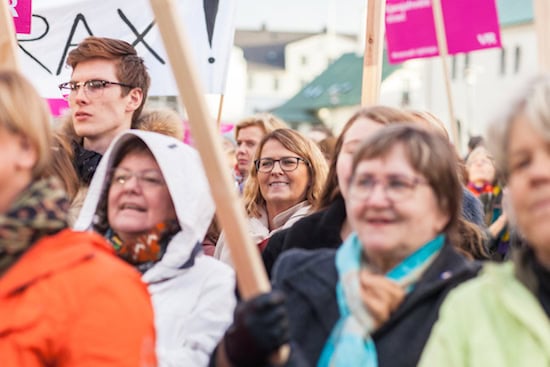Thousands of Icelandic women have staged a protest over fair pay, leaving their workplaces early to highlight the country’s 14-18 per cent wage gap between men and women
Though many consider Iceland a world leader in terms of gender equality, a pay gap remains. On Monday this week, female workers gathered in Reykjavík’s central Austurvöllur Square after leaving work at 2:28pm. They, and women at smaller protests across the country, called upon authorities to close the 14-18 per cent gap between men and women’s wages. The action highlighted that any woman remaining at work beyond that time was effectively working for free.
It is not the first protest of its kind in the Nordic country. On 24 October, 1975, 90 per cent of Icelandic women staged a day-long walkout from their jobs in companies and at home, to protest the disparity in pay and their representation of women in society and in parliament. Further walkouts were staged in 2005 and 2010 leading to an estimated three-minute decrease in the gap with every protest.

Women in Iceland come together to strive for equality and ‘kvennafrí’ (women’s rights)
If the rate of progress remains the same, it will take Iceland 52 years for men and women to receive equal pay.
“It’s a very sad thing that society has managed to pay men better than women,” said Iceland’s former prime minister Vigdís Finnbogadóttir who was both Iceland and Europe’s first female president, and the world’s first female president to be democratically elected. “We know that it is done by labelling the work of men differently from the work of women, and that is what women are trying to correct by walking out again.”
Finnbogadóttir has long urged Icelandic women to speak out, to educate themselves and to rally with other women to better their community. “There is no doubt that Iceland can be a role model for equal rights in the world,” she said.
Images: Birgir Ísleifur/VR
